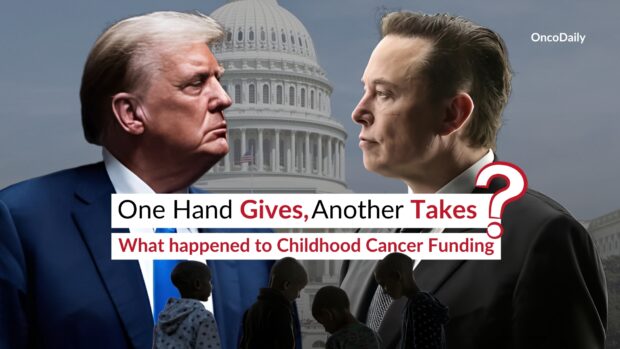With growing concerns over childhood cancer funding cuts, the political tug-of-war in Congress has cast a shadow over the future of critical research and support programs. Recently, Congress has been involved in intense discussions surrounding a spending bill to prevent a government shutdown. Assistant News Director Eric Daughtery shared a post on X featuring a photo (originally from the DODGE page) that highlights the stark difference in length between the new continuing resolution, 116 pages, and the original bill, spanning 1,547 pages. Notably, Elon Musk weighed in on the matter, responding with a Latin proverb that translates to, “The voice of the people is the voice of God.”
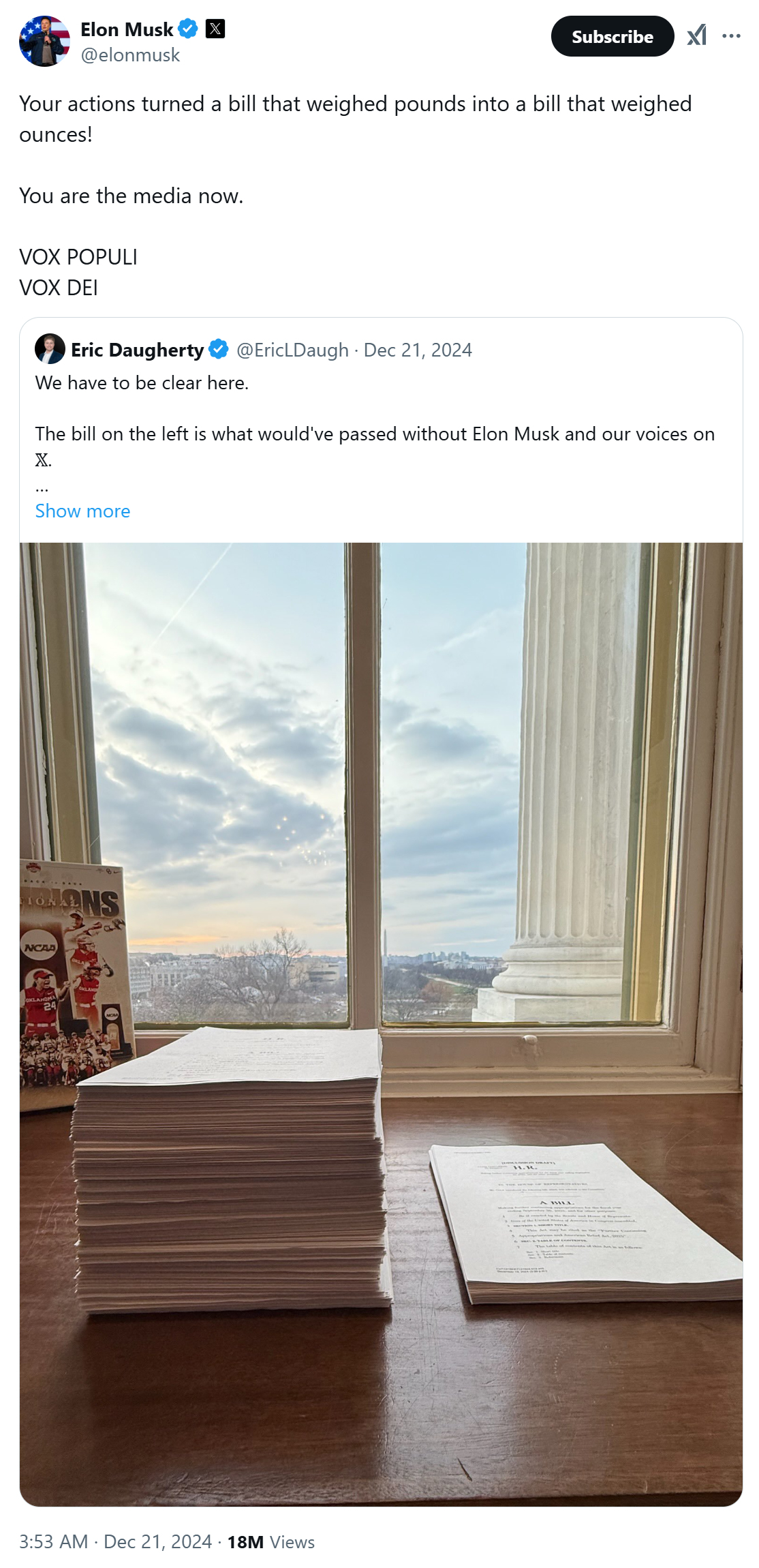
The funding deal was initially agreed upon by Congressional leadership, but it came under attack after Elon Musk criticized the bill on social media. Musk called the bill a “Christmas tree” (a term used to describe bills laden with unrelated provisions) and argued that it contradicted conservative values. Musk’s criticism put pressure on lawmakers, particularly Republicans, and ultimately, the Gabriella Miller program and Give Kids a Chance Act were stripped from the bill.
Let’s Understand the Issue: What Happened to Pediatric Cancer Research Funding?
Childhood cancer research funding has long been a bipartisan priority in the United States. Yet recent political disputes have left critical programs vulnerable, raising questions about the future of pediatric oncology. At the center of this controversy is the Gabriella Miller Kids First Research Act 2.0—a bill designed to expand funding for childhood cancer and rare disease research at the National Institutes of Health (NIH). While this legislation garnered significant bipartisan support in both chambers of Congress, it became collateral damage during heated negotiations over a government funding bill.
The result? Provisions that would have allocated $190 million toward life-saving pediatric cancer initiatives were stripped from the final spending package. Amid this fallout, political leaders, advocates, and even billionaires like Elon Musk have been drawn into a debate about who is to blame—and what must be done to protect children facing cancer.
Let’s break it down: What is this act, what are the funds in question, and who decided to cut them?
Key Terms Explained: Understanding the Legislative Framework
To fully understand the debate surrounding pediatric cancer funding, it’s essential to understand the terms and processes that define U.S. legislation:
- Spending Bill: A spending bill authorizes allocating government funds for specific programs and initiatives. These bills are typically part of larger funding packages, like the annual federal budget or short-term continuing resolutions to prevent government shutdowns.
- Standalone Act: A standalone act, like the Gabriella Miller Kids First Research Act, is legislation that addresses a single issue or program. While standalone acts are less complex and easier to understand, they often struggle to gain traction in Congress due to competing legislative priorities.
- Gabriella Miller Kids First Research Act: Named after Gabriella Miller, a 10-year-old advocate who succumbed to brain cancer in 2013, this act has historically provided funding for pediatric disease research. It aims to support groundbreaking studies and data-sharing initiatives through the NIH.
- Who “Cut” the Funding? Critics, including many Democrats, blame Elon Musk and his social media influence for derailing a bipartisan funding deal, labeling him the “Grinch who stole cancer research.” Musk criticized the funding bill as bloated and inefficient, pressuring Republicans to strip the Gabriella Miller provisions. On the other hand, Republicans argue that Democrats failed to pass the act as a standalone bill when they controlled the Senate earlier in the year. They claim it was the Democrats’ missed opportunity, not GOP obstruction, that left the program in limbo.
- What Acts Passed? What Remained in Limbo? Despite the contentious nature of recent legislative sessions, the Gabriella Miller Kids First Research Act 2.0, in the end, was successfully revised and passed as a standalone bill, ensuring continued support for pediatric cancer research. However, other critical acts such as the Accelerating Kids to Research Act, Creating Hope Reauthorization Act, and the Give Kids a Chance Act were left out of the final spending package and remain in legislative limbo.
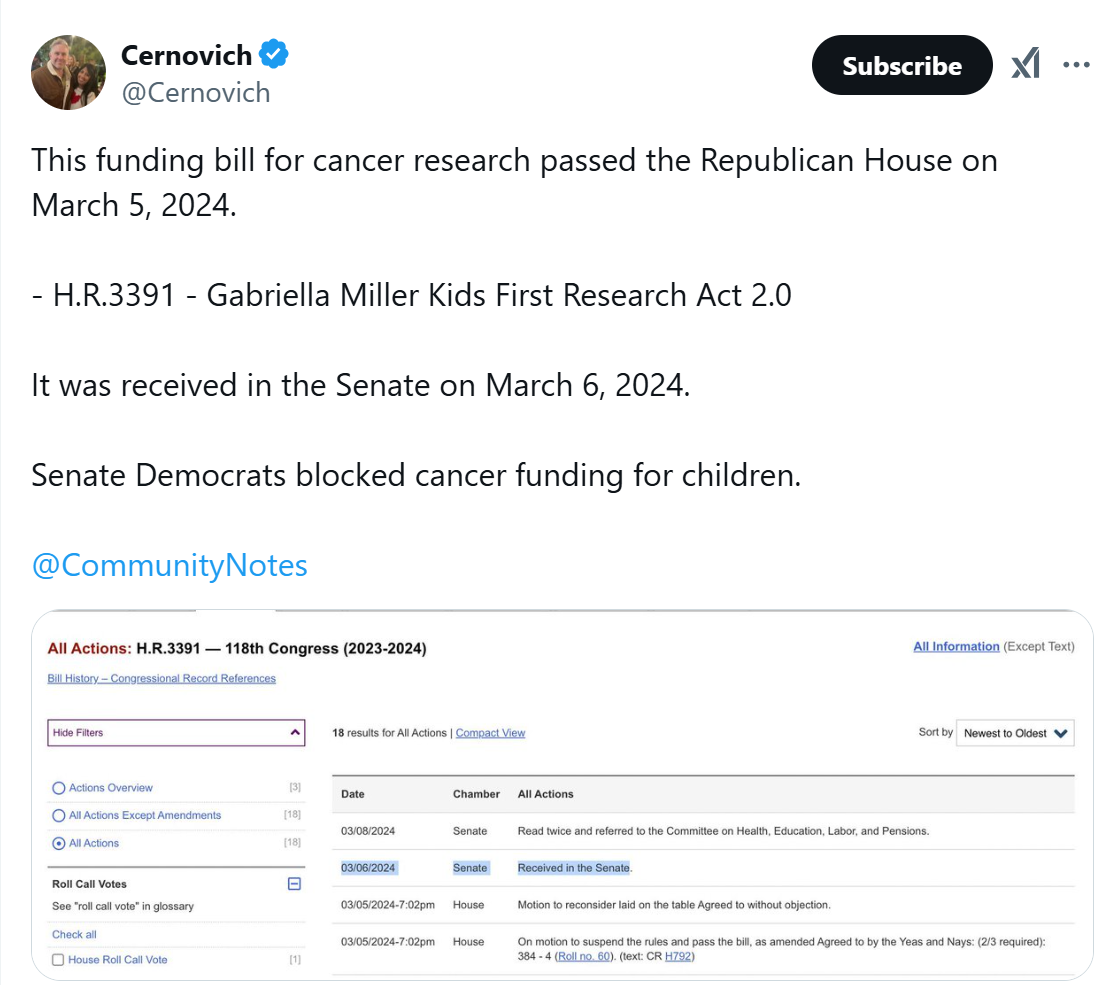
What is Gabriella Miller Kids First Research Act?
The Gabriella Miller Kids First Research Act is a law that aims to advance pediatric research, particularly in the areas of childhood cancer and structural birth defects – named after Gabriella Miller, a 10-year-old young girl from Leesburg, Virginia, who became a powerful advocate for childhood cancer despite her battle with diffuse intrinsic pontine glioma, a rare and aggressive form of brain cancer. Diagnosed at the age of 9, Gabriella used her voice to raise awareness and funds for pediatric cancer research, passionately stating, “We need action” instead of mere words.
Through her foundation, Smashing Walnuts, she aimed to symbolize the fight against cancer by smashing walnuts—representing her tumor’s size. Gabriella raised over $250,000 for the Make-A-Wish Foundation and inspired countless others with her relentless spirit and determination.
Even in her final days, she expressed hope for future generations, urging others to continue the fight against childhood cancer. Gabriella’s legacy lives on through the Gabriella Miller Kids First Research Act, which honors her memory by allocating funds for pediatric research initiatives.
This extension was a crucial step in continuing the fight against pediatric cancer. The program had been hailed as a rare moment of unity in Washington, D.C., where both Democrats and Republicans came together to fund much-needed research in honor of a child who had lost her life to cancer.
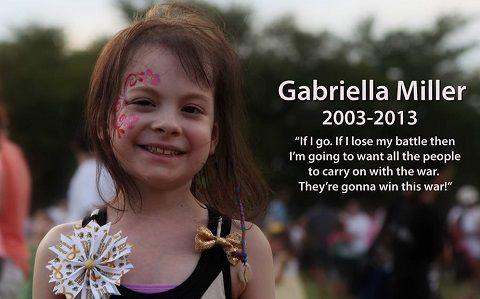
Photo from London Times Mirror
Historical Context On Act: How Did We Get Here?
The Gabriella Miller Kids First Research Act has long been seen as a rare point of bipartisan agreement in a deeply divided Congress. Initially passed in 2014, the act was designed to direct penalties for corporate law violations toward pediatric cancer research. Over the years, it has supported essential initiatives, such as the Kids First Data Resource Center, which provides whole genome sequencing data to researchers worldwide.
In March 2024, the House overwhelmingly passed an updated version of the act (H.R. 3391), extending funding through 2033. However, rather than advancing it as a standalone bill in the Senate, Democrats folded it into a larger government funding package, making it vulnerable to political negotiations during contentious budget talks. At this point, some readers are probably asking a good question:
If the legislation already passed the lower chamber months earlier, why didn’t the Senate Democratic majority bring it to the floor earlier? Why blame House Republicans for killing a bill related to pediatric cancer research if the GOP-led House already advanced the program? I’m afraid this is the complicated part. Because of the way the Senate operates, and the time it takes to pass anything through the upper chamber, the Senate generally avoids taking up relatively small, standalone policies. The calendar just won’t allow it. Members instead wait for larger spending packages and simply attach the smaller bills. This Paragraph is by Steven Benen MSNBC.
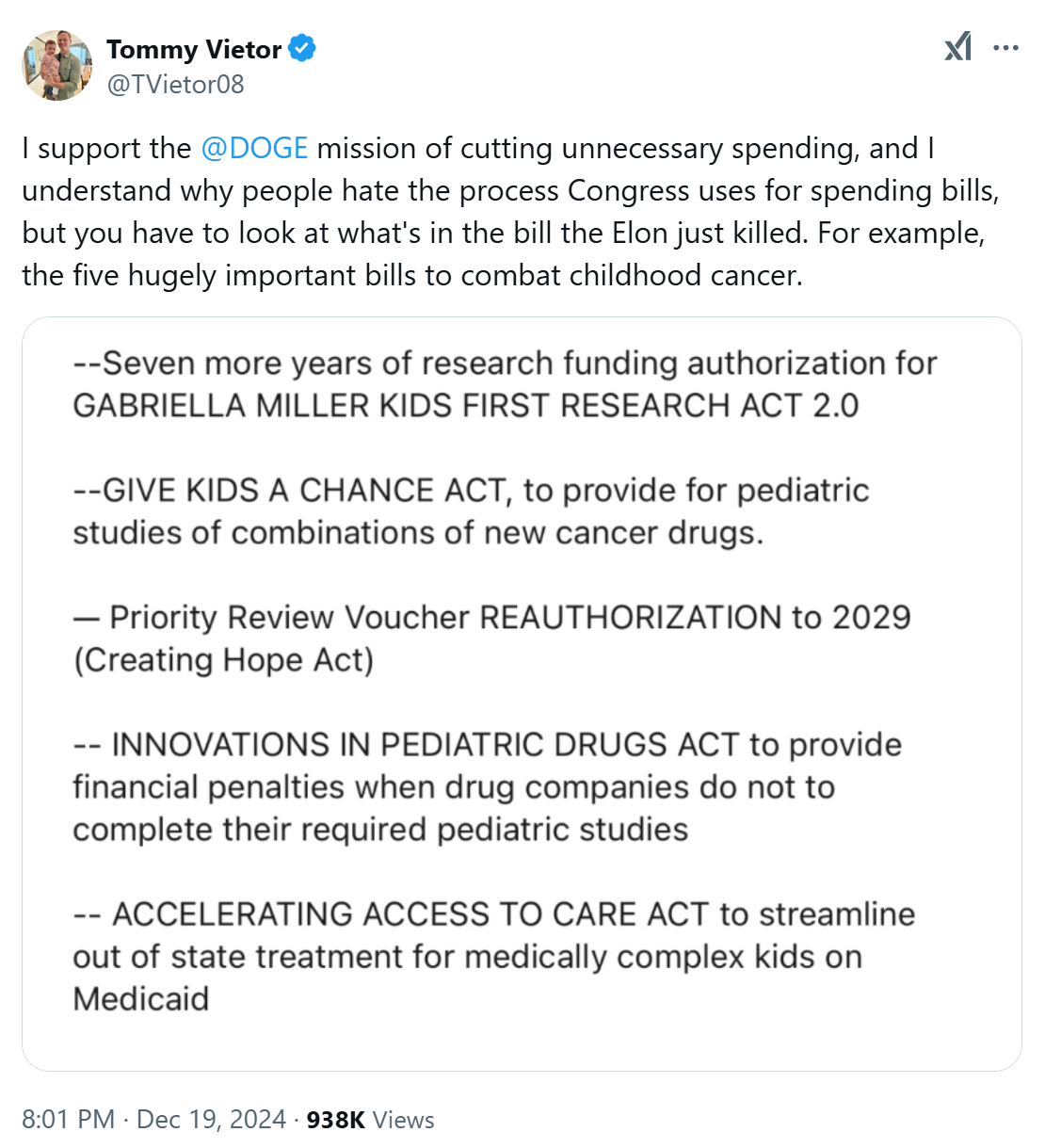
In December 2024, the Bulwark’s Sam Stein, an MSNBC contributor, reported that GOP lawmakers terminated funding for the Gabriella Miller Kids First Research Program. As the omnibus spending bill came under scrutiny, influential voices like Elon Musk criticized it as wasteful and “bloated.” Under pressure, Republican leaders stripped the Gabriella Miller provisions, along with other funding for rare disease research, to push the bill through. This decision shocked advocates and has potentially set back pediatric cancer research significantly, as the original bill promised $190 million to not only continue existing research but also to develop innovative treatments, particularly for children with relapsed cancer. Key provisions of the initial funding bill included:
- Combination Cancer Treatments for Kids: Breaking from the FDA’s traditional constraints that limit pediatric cancer trials to single-drug tests, the bill proposed enabling access to experimental multi-drug treatments.
- Support for Small Pharmaceutical Companies: The bill sought essential support for smaller companies focused on developing treatments for rare pediatric diseases, recognizing the financial and regulatory hurdles these firms face.
Republicans defended their actions, blaming Democrats for not passing the act earlier as a standalone measure. Meanwhile, advocates warned that the cuts would jeopardize years of progress and leave vulnerable children without critical support. As the blame game unfolds, one thing remains clear: pediatric cancer research must remain a priority, no matter the political climate.
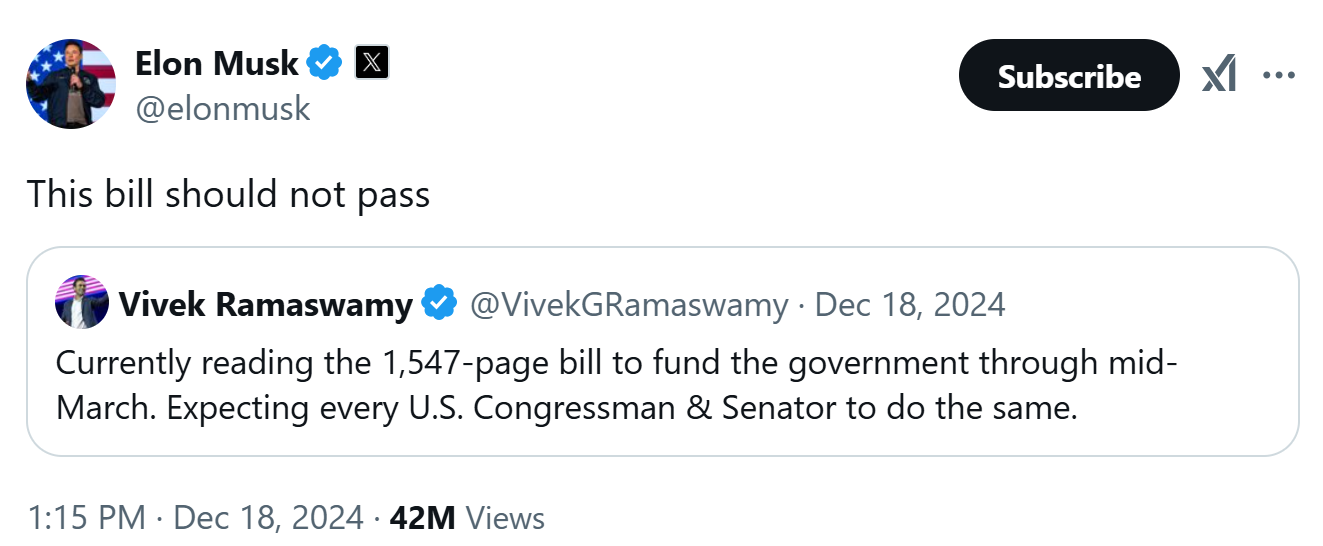
As political journalist Sam Stein reports for The Bulwark, Congressional GOP leadership has kowtowed to Musk’s pressure and kiboshed the budget proposal meant to keep the government open and fund essential functions.
How did Childhood Cancer Advocates and the Community React?
For advocates like Nancy Goodman, founder of Kids v. Cancer, this decision is not just a political setback; it is a devastating blow to the hopes and dreams of countless children and their families fighting against this relentless disease.
“I was just devastated, to be honest. The pediatric cancer community has spent 15 years to get to this point. This is the most significant bundle of pediatric cancer bills ever to be considered in Congress,” “Tomorrow, there may be some pediatric oncologists at Texas Children’s who have to call the family of a child in Louisiana and tell them that they can’t treat that child because they can’t have that child’s treatment transferred from Louisiana to Texas. Even though Texas Children’s is one of the leading centers. Even if the child lives very close to the hospital, just across state lines,” – Nancy Goodman told Newsweek
“Throughout the 118th Congress, I’ve worked hand-in-glove with Republicans to draft a bipartisan package of bills to help children with cancer and rare diseases receive new lifesaving treatments. Earlier this week, the bills were included in the bipartisan agreement to keep the government funded. Now, thanks to a tweet from an unelected billionaire, Elon Musk, House Republicans have abandoned this legislation that saves children’s lives,”
“Every child deserves access to the best possible healthcare and a healthy start to life, but Republicans have walked away from that promise to our nation’s children.” – Rep. Anna G. Eshoo Press Release 20 Dec 2024
“Republicans would rathercut taxes for billionaire donors than fund research for children with cancer.” – House Minority Leader Hakeem Jeffries (D-NY)
We also have a response to just one of these comments from Elon Musk.
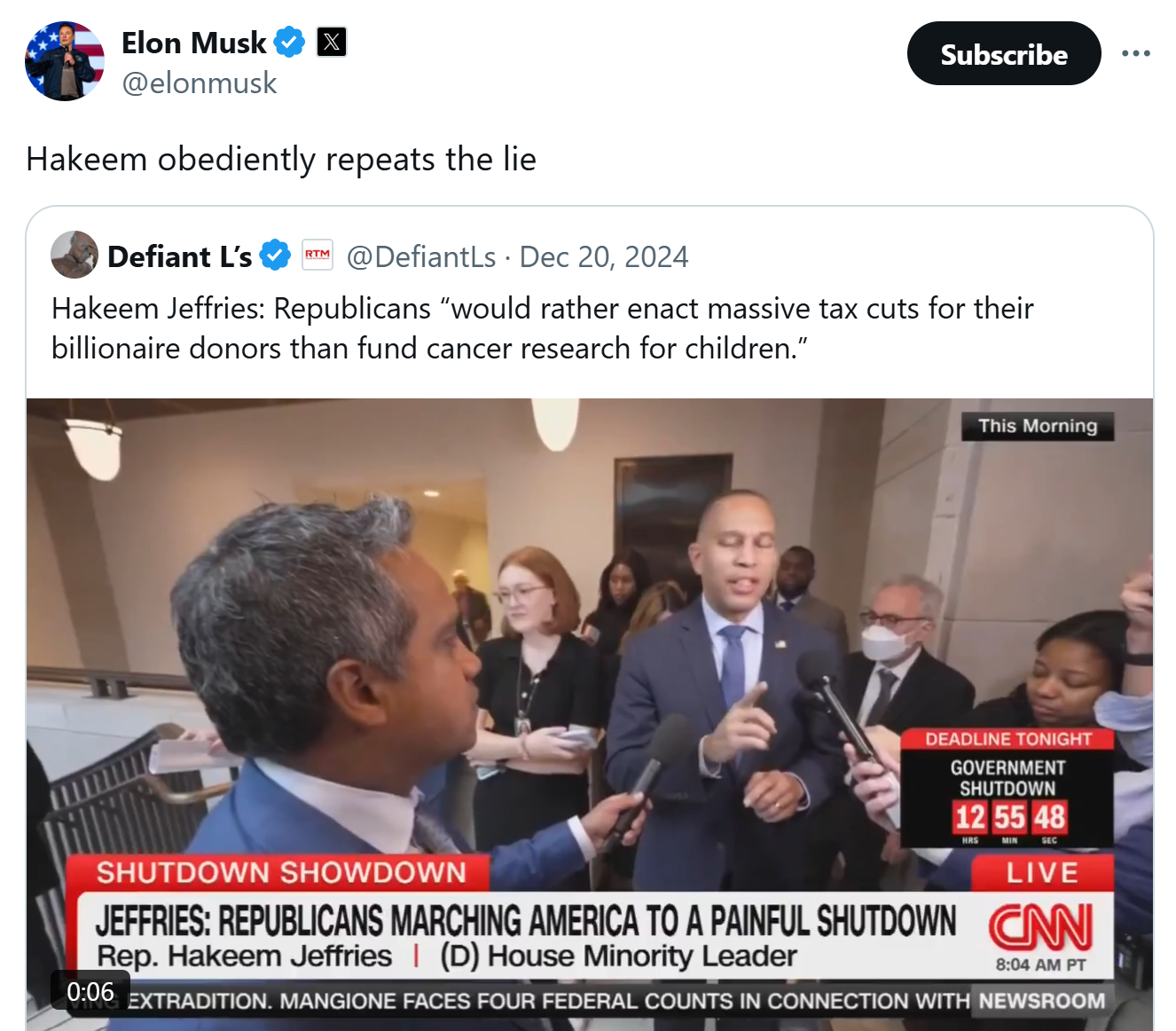
“The pain and anguish on the basis of families that face a child threatened by death and disability from cancer, that was a reasonable provision we got Republicans to agree on. Some funding for community health centers. And I hope that can be included in the bill. Those are the kind of programs that some want to cut to find tax cuts for those at the top.” – Representative Lloyd Doggett, a Texas Democrat, on CNN
Why Fund Childhood Cancer Research?
Although cancer in children and adolescents is rare, it is the leading cause of death by disease after infancy among children in the United States. It is estimated that, in 2024, a total of 14,910 children and adolescents ages 0 to 19 will be diagnosed with cancer and 1,590 will die of the disease in the United States. Among children (ages 0 to 14 years), it is estimated that 9,620 will be diagnosed with cancer and 1040 will die of the disease. Among adolescents (ages 15 to 19 years), it is estimated that 5,290 will be diagnosed with cancer and 550 will die of the disease, according to the National Cancer Institute.
According to the American Childhood Cancer Organisation, approximately 1 in 285 children in the U.S. will be diagnosed with cancer before their 20th birthday. Globally, over 300,000 children receive this devastating diagnosis annually, equating to a family hearing the life-altering words “your child has cancer” every three minutes. According to the NIH Environmental and Health Science Report, over the past 40 years, the incidence of childhood leukemia alone has risen by 35%. While advancements in treatment have improved survival rates for many types of childhood cancers, the reality remains grim for too many families: cancer continues to shorten lives far too soon.
The facts are clear. Cancer remains one of the leading causes of death by disease among children in America, underscoring the urgent need for continued research and innovation.
How Has Funding for Research Improved Childhood Cancer Outcomes?
The survival rates for childhood cancer have seen remarkable improvements over the past several decades, largely due to advancements in research and clinical trials. In the mid-1970s, only about 58% of children diagnosed with cancer survived for at least five years. Fast forward to today, and that figure has risen to nearly 80% reflecting significant progress in treatment options and outcomes
- 1970s: The five-year survival rate for childhood cancer was approximately 58%.
- 1990s: Advances in treatment began to show results, with survival rates climbing steadily.
- 2010-2014: The overall five-year survival rate reached around 81%.
- 2013-2019: Specific age groups showed even higher rates, with children aged 1–4 years having a survival rate of 87.8%.
According to the NCI SEER database, the cancer mortality rate—the number of deaths due to cancer per 100,000 people per year—among children and adolescents younger than 20 years declined by more than 50% from 1975 to 2022. It dropped from 5.1 per 100,000 children and adolescents in 1975 to 2.2 per 100,000 children and adolescents in 2022.
What About President Trump’s $500 Million?
In February 2019, during his State of the Union address, President Donald Trump proposed allocating $500 million over ten years for pediatric cancer research. This initiative, known as the Childhood Cancer Data Initiative (CCDI), addresses the lack of new therapies for childhood cancers, which have not seen significant advancements in decades. The proposed funding would amount to $50 million per year, representing an approximate 11% increase over the existing federal spending on pediatric cancer, estimated at $462 million in 2019.
The announcement received mixed reactions. While some organizations, like the American Cancer Society, welcomed any increase in funding as a positive step, others, including House Speaker Nancy Pelosi, criticized the proposal as insufficient compared to larger initiatives like the Cancer Moonshot, which had previously received significantly more funding.
The initiative is expected to enhance data sharing among researchers and institutions, a critical factor given the rarity of pediatric cancers. The National Cancer Institute (NCI) indicated that leveraging existing patient data would be a major thrust of this initiative, aiming to develop new knowledge and treatment approaches for childhood cancers. The CCDI officially began in 2020, marking a commitment to improving outcomes for children diagnosed with cancer through better data integration and collaboration among research entities.
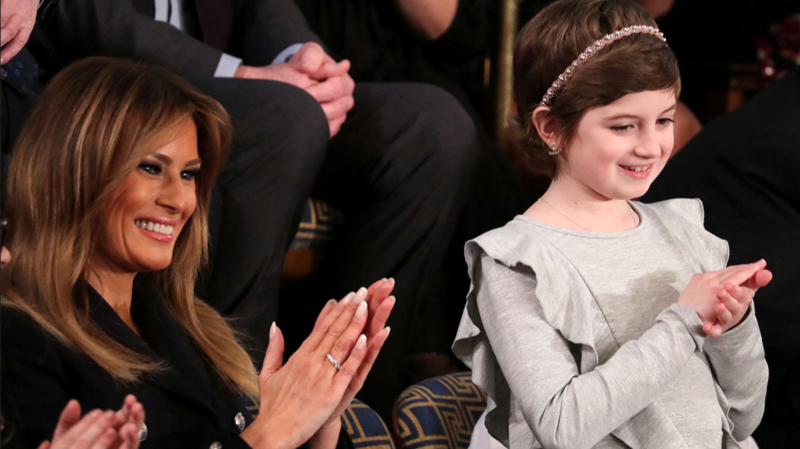
Brain cancer survivor Grace Eline (right) and First Lady Melania Trump (left) at the State of the Union address. Jonathan Ernst/REUTERS
Final Outcomes: Did the Gabriella Miller Kids First Research Act 2.0 Pass in Congress?
As the U.S. Congress worked to avert a government shutdown with the passage of a new spending bill on December 21, a mixed outcome unfolded for pediatric cancer funding. While the Gabriella Miller Kids First Research Act 2.0 successfully passed as a standalone bill, securing its extension and funding from the National Institutes of Health, other critical provisions faced a less fortunate fate.
Passed Legislation
- Gabriella Miller Kids First Research Act 2.0: This act, named after a young advocate who lost her battle with brain cancer, was designed to fund pediatric cancer and rare disease research.
Initiatives on Hold
- Give Kids a Chance Act: Despite strong support and previous passage in the House, this act is stalled. It aimed to allow children with relapsed cancers to receive combination therapies that could potentially save or significantly extend their lives. Facilitate clinical trials for pediatric patients, targeting specific molecular aspects of the disease.
- Accelerating Kids to Research Act and Creating Hope Reauthorization Act: These acts were designed to facilitate access to specialized cancer treatment across state lines for low-income families and to extend incentives for pediatric drug development. Unfortunately, they were omitted from the final spending package.
The exclusion of these acts from the spending bill was met with dismay from the pediatric cancer community, which had anticipated further advancements in treatment options and accessibility. Despite pediatric cancers being the leading cause of death by disease among U.S. children and young adults under 20, only a fraction of cancer research funds are allocated to pediatric studies.
“But three hours before a scheduled vote, to the surprise of the country, the funding bill fell apart. What Congress ultimately passed into law was a stripped down bill from which the reauthorization of the pediatric priority review voucher program and the Give Kids a Chance Act had been dropped”
From Nancy Goodman, Founder and Executive Director of Kids v Cancer, status in X.
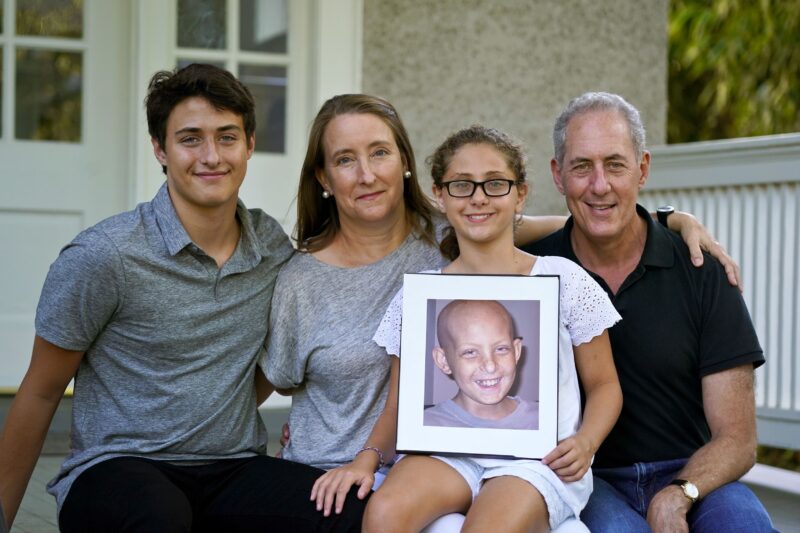
Nancy Goodman (second from left), with Ben (left), Sarah, husband Michael, and a photo of Jacob. Courtesy Nancy Goodman
“Let’s get rid of funding for research on early detection of cervical cancer and breast cancer. Let’s get rid of funding for research on children with Down Syndrome and on sickle cell anemia. Let’s get rid of those things so that we could make way for tax cuts for billionaires, that is Elon Musk’s notion of efficiency,” – Sen. Elizabeth Warren (D-MA) Dec 22 FoxNews
But Is the Childhood Cancer Data Initiative (CCDI) Enough Without the “Give Kids a Chance” Program?
The Childhood Cancer Data Initiative (CCDI) is a significant step forward in pediatric cancer research, focusing on data collection, sharing, and integration to improve outcomes for children with cancer. However, whether CCDI alone is sufficient without the “Give Kids a Chance” program depends on several factors.
- Complementary Goals: CCDI aims to gather comprehensive data from all children diagnosed with cancer, enhance molecular characterization, and create a robust data ecosystem for research and clinical use. In contrast, the “Give Kids a Chance” program may focus on specific interventions or support mechanisms for children undergoing treatment. Both initiatives can complement each other by addressing different aspects of childhood cancer care.
- Data-Driven Research: CCDI emphasizes the importance of data in driving research and improving clinical outcomes. It seeks to unify disparate data sources to enable better understanding and treatment of pediatric cancers. The success of CCDI relies heavily on the quality and comprehensiveness of the data collected, which may be enhanced by additional programs like “Give Kids a Chance” that provide targeted support and resources.
- Addressing Unmet Needs: While CCDI addresses systemic issues in pediatric cancer research through data sharing and integration, there may still be unmet needs in direct patient care and support services that programs like “Give Kids a Chance” aim to fulfill. These needs include psychosocial support, financial assistance, and access to cutting-edge treatments that may not be fully covered by existing research initiatives.
- Long-Term Impact: The effectiveness of CCDI will depend on its ability to translate data into actionable insights that improve treatments and outcomes for children with cancer. Programs like “Give Kids a Chance” could play a crucial role in ensuring that these insights are implemented effectively in clinical settings.
As the halls of Congress resonated with the sound of standing ovations for the passing of the Gabriella Miller Kids First Research Act 2.0, it highlighted the strength and resolve of those fighting for our youngest cancer patients. Politics will always be with us, but our children with cancer should never suffer because of it. Now more than ever, the pediatric community must stand united and persistent in pushing for more support. Let’s keep raising our voices, fighting for funding, and ensuring that every child has a fighting chance. Together, we can make a lasting difference. Let’s not stop here; let’s keep going for them.
Why Your Voice Matters?
Children with cancer cannot march in protests or shout from hospital rooms for the attention they deserve. They rely on us—adults, advocates, and community members – to amplify their voices and raise awareness about the critical need for funding and research into childhood cancer. By contacting your representatives and urging them to support increased funding for childhood cancer research, you can help ensure these children receive the care they need.
We can change this narrative. One powerful way to make a difference is by reaching out to your senators, congresspersons, or corporate leaders you follow on social media. Whether you meet them in person or connect online, remind them that our world should not only focus on fighting wars or exploring new frontiers; we must also prioritize the health and well-being of our children.
1$ or 1,000,000$
We are calling You, every organization, every Democrat, every Liberal, every Republican, and every non-partisan individual to join us. It is not enough to stand against each other; it is more important to unite for the chance of children to receive the care they deserve and to continue laughing because cancer doesn’t take a day off. Together with the inspiring words of little Gabriella, ‘We need action!’ we can make a difference in their lives!
In honor of International Childhood Cancer Day, Oncodaily and SIOP (International Society of Pediatric Oncology) will present The Second Global Oncothon on February 15th, a 24-hour worldwide telethon aimed at raising funds for cancer. We are amplifying our efforts to support pediatric cancer research.
The moment a child receives a new, innovative injection or pill that can save their life and grant them more years filled with laughter and happiness is a moment of triumph for humanity. It is a victory over egoism, where compassion prevails over indifference. Can anyone imagine a better way to use one dollar or even a million dollars, than to invest in the health and future of our children? Supporting childhood cancer research is not just an act of charity but an investment in hope, joy, and the potential for a brighter tomorrow.
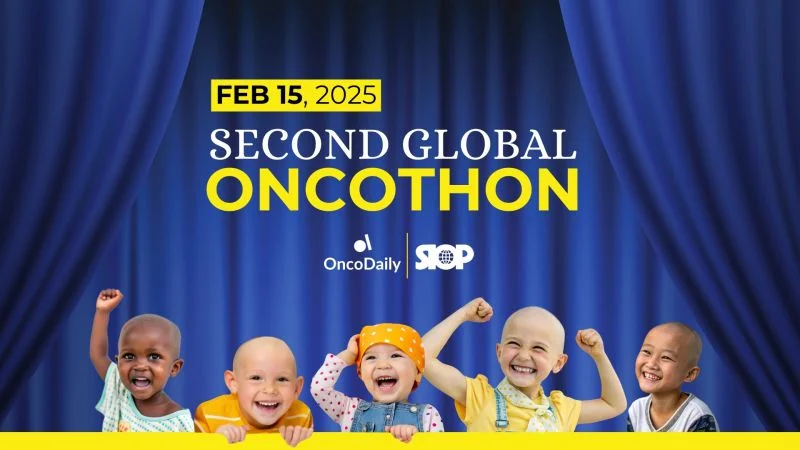
For every child. For every family. For every human.
